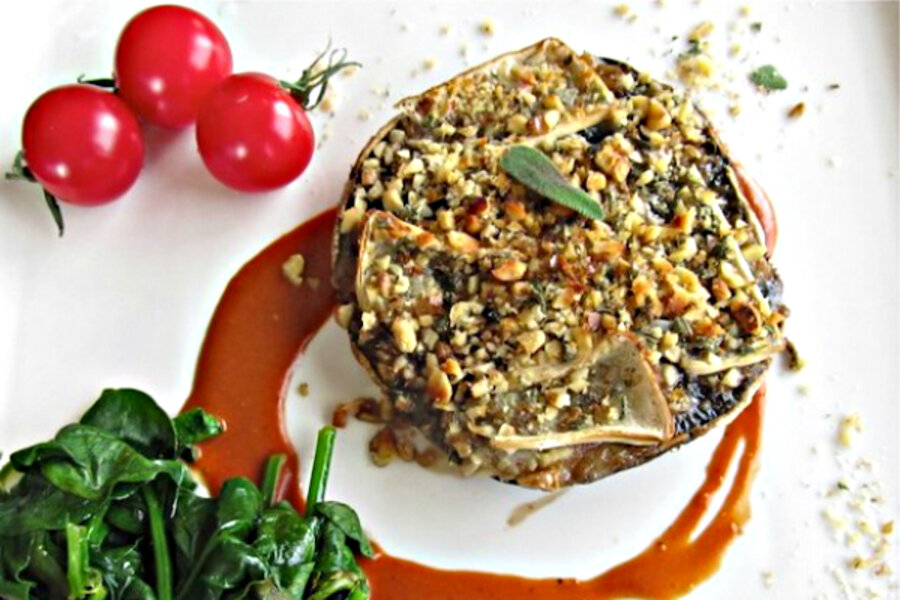By France Morissette and Joshua Sprague, Beyond The Peel
2 portobello mushrooms
Olive oil
2 ounces of aged brie
1/4 cup chopped walnuts
4 large sage leaves
1. Preheat the oven to 375 degrees F.
2. Clean the mushrooms, break the stems off and reserve for another purpose. Place the mushroom caps upside down on a baking sheet. Brush the caps with olive oil and sprinkle with salt and pepper. Put 1 ounce of cheese (or more if you wish) on each. In a small bowl add the chopped walnuts. Finely chop the sage and add it to the walnuts. Stir to combine. Sprinkle each mushroom cap with 2 tablespoons of the walnut mixture.
3. Bake for 10-12 minutes or until mushrooms are tender. If the walnuts have not browned yet, broil for 1 to 2 minutes (set a timer). Serve with tomato balsamic emulsion.
Tomato balsamic emulsion
1/4 cup olive oil
1/4 cup of tomato purée
2 tablespoons balsamic vinegar
1 garlic clove, minced
1/4 teaspoons crushed fresh pepper
1/4 cup of Spanish smoked paprika
Using an emulsion blender, place all the ingredients in a pitcher. Blend everything into a thick emulsion. A mini food processor would work, too. Season with salt and more pepper. Serve by spreading 1-2 tablespoons of the sauce on the plate and place mushroom on top.








